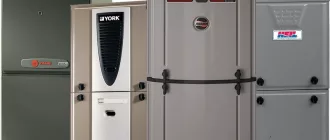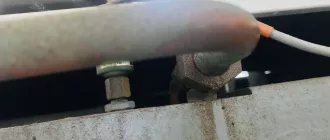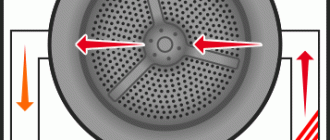Enhance Your Home’s Indoor Air Quality with These Five Simple Methods
Indoor air quality is a crucial aspect of maintaining a healthy home environment. Poor air quality can lead to various respiratory issues, allergies, and even long-term health problems. Fortunately, there are several effective ways to improve the indoor air quality of your home.
1. Regularly clean and vacuum your home
Keeping your home clean is essential for maintaining good air quality. Dust, pet dander, pollen, and other allergens can accumulate on surfaces and in carpets, contributing to poor air quality. Make sure to dust regularly, vacuum carpets and upholstery, and mop hard floors. Using a high-quality air purifier with a HEPA filter can also help remove airborne particles.
2. Control humidity levels
High levels of humidity can promote the growth of mold and mildew, leading to poor air quality and potential health issues. Use a dehumidifier in damp areas of your home to reduce moisture levels, and consider using exhaust fans in the kitchen and bathroom to prevent excess moisture buildup.
3. Ventilate your home properly
Proper ventilation is crucial for maintaining good air quality. Open windows and doors whenever possible to allow fresh air to circulate. Additionally, installing exhaust fans in the kitchen and bathroom can help remove pollutants and odors from your home. Regularly check and clean ventilation systems to ensure they are functioning properly.
4. Avoid harsh chemicals
Many cleaning products and air fresheners contain harsh chemicals that can negatively impact air quality. Opt for natural, eco-friendly cleaning products and avoid using aerosols whenever possible. Be mindful of the products you bring into your home and choose those with minimal chemical content.
5. Keep indoor plants
Indoor plants not only add a touch of greenery to your home but also have air purifying properties. Plants such as snake plants, peace lilies, and spider plants can help remove toxins from the air and improve indoor air quality. Just make sure to properly care for your plants to ensure they stay healthy and effective.
By implementing these five ways to improve the indoor air quality of your home, you can create a healthier and more pleasant living environment for you and your family. Taking small steps towards better air quality can have significant long-term benefits for both your health and overall well-being.
Five Simple Steps to Improve Indoor Air Quality at Home
Improving the quality of the air indoors is essential for your health and well-being. Here are five easy and effective ways to improve the indoor air in your home:
- Keep your home clean: Regularly dust and vacuum your home to remove dust, pet dander, and other allergens that can worsen air quality.
- Proper ventilation: Open windows regularly to let fresh air in and stale air out. Use exhaust fans in kitchens and bathrooms to remove excess moisture and odors.
- Control humidity: Use a dehumidifier or air conditioner to keep indoor humidity levels below 50%. High humidity can promote the growth of mold and mildew, which can be harmful to your health.
- Avoid smoking indoors: Smoke contains harmful chemicals that can negatively affect air quality. If you or someone in your home smokes, encourage them to smoke outside away from open windows and doors.
- Use natural cleaning products: Many conventional cleaning products contain harsh chemicals that can pollute indoor air. Opt for natural alternatives such as vinegar, baking soda, and lemon juice.
By implementing these five simple steps, you can significantly improve the indoor air quality in your home and create a healthier living environment for you and your family.
Regularly Clean and Vacuum Your Home
One of the most effective ways to improve the air quality in your home is to regularly clean and vacuum. Dust, pet dander, and other airborne particles can accumulate over time and contribute to poor indoor air quality. By regularly cleaning and vacuuming your home, you can remove these particles and help to improve the overall air quality.
Here are five ways to incorporate regular cleaning and vacuuming into your routine:
-
Dust surfaces: Use a damp cloth or microfiber cloth to wipe down surfaces such as countertops, tables, and shelves. This will help to remove dust and allergens that can be circulating in the air.
-
Vacuum regularly: Use a vacuum with a HEPA filter to effectively remove dust, pet dander, and other particles from your carpets and rugs. Vacuuming at least once a week can help to maintain a healthier indoor environment.
-
Clean upholstery: Dust and allergens can also accumulate on upholstery and furniture. Use a vacuum with upholstery attachments to clean sofas, chairs, and curtains on a regular basis.
-
Change air filters: Regularly changing your HVAC system’s air filters can help to improve the air quality in your home. Dirty filters can restrict airflow and allow pollutants to circulate in the air.
-
Keep floors clean: Sweeping or mopping hard floors can help to remove particles and maintain a cleaner indoor environment. Use a damp mop or microfiber mop for best results.
By incorporating these five practices into your cleaning routine, you can make a significant difference in the air quality of your home. Regular cleaning and vacuuming can help to reduce allergens, dust, and other pollutants, creating a healthier and more comfortable living environment for you and your family.
Use Natural Cleaning Products
When it comes to improving the indoor air quality of your home, one of the easiest and most effective ways is to use natural cleaning products. Conventional cleaning products often contain harsh chemicals that can release volatile organic compounds (VOCs) into the air, which can have a negative impact on your health.
By opting for natural cleaning products, you can reduce your exposure to these harmful chemicals and improve the air quality in your home. Natural cleaning products are made from plant-based ingredients and do not contain synthetic fragrances or chemicals. They are safer for you, your family, and the environment.
To find natural cleaning products, look for labels that indicate they are non-toxic, biodegradable, and free from artificial fragrances and dyes. You can also make your own natural cleaning products using ingredients like vinegar, baking soda, and lemon juice.
- Choose natural all-purpose cleaners for surfaces like countertops, floors, and windows.
- Opt for natural dish soaps and laundry detergents that are gentle on your skin and less likely to irritate your respiratory system.
- Use natural air fresheners, such as essential oils or natural beeswax candles, instead of synthetic air fresheners that can release harmful chemicals into the air.
- Replace your conventional cleaning sponges and brushes with natural alternatives like bamboo or coconut fiber brushes.
- Consider using natural fabrics, like cotton or hemp, for your cleaning cloths to avoid microplastic pollution.
By making the switch to natural cleaning products, you can create a healthier indoor environment for you and your family. Not only will you improve the air quality of your home, but you will also contribute to a cleaner and more sustainable planet.
Ensure Proper Ventilation
Ventilation plays a crucial role in improving the air quality of your indoor space. Proper ventilation helps to remove stale air and bring in fresh air from outside, reducing the concentration of pollutants and allergens.
Here are several ways to ensure proper ventilation in your home:
- Open windows and doors regularly to allow for natural airflow. This can help to flush out stagnant air and bring in fresh air.
- Install exhaust fans in bathrooms and kitchens to remove moisture and odors. These fans help to prevent the buildup of mold and mildew, which can affect the indoor air quality.
- Make sure your HVAC system is well-maintained and has clean filters. A properly functioning HVAC system can help to circulate clean air throughout your home.
- Consider installing an air purifier or air cleaner. These devices can help to remove pollutants, allergens, and odors from the air, improving its quality.
- Avoid using products that release pollutants into the air, such as tobacco, harsh cleaning chemicals, and certain types of paints or varnishes.
By ensuring proper ventilation in your home, you can significantly improve the indoor air quality, creating a healthier and more comfortable living environment for you and your family.
Keep Your Home Free from Mold and Moisture
Mold and moisture can have a significant impact on the air quality in your home. Here are five ways to improve indoor air quality and keep your home free from mold and moisture:
- Ensure proper ventilation in your home. Good airflow helps prevent mold growth and keeps the air fresh.
- Use dehumidifiers to control moisture levels. Keeping humidity below 50% can help inhibit mold growth.
- Fix any leaks or water damage promptly. Moisture from leaks can create an ideal environment for mold to thrive.
- Clean and vacuum regularly. Dust and dirt can contribute to poor air quality and provide a food source for mold.
- Monitor and maintain indoor humidity levels. Use hygrometers to measure humidity and take steps to adjust levels if necessary.
By following these five steps, you can significantly improve the indoor air quality of your home and keep it free from mold and moisture-related issues.
Invest in Air Purifiers and Filters
One of the most effective ways to improve the indoor air quality of your home is to invest in air purifiers and filters. These devices are designed to remove pollutants, allergens, and other harmful particles from the air, ensuring that you and your family breathe clean and fresh air.
Air purifiers work by capturing and trapping particles like dust, pet dander, mold spores, and pollen, preventing them from circulating in your home. They use filters, such as HEPA filters, to trap these particles, ensuring that the air you breathe is free from contaminants.
Additionally, some air purifiers use activated carbon filters, which can help remove odors and volatile organic compounds (VOCs) from the air. This is especially useful if you have pets or if you use cleaning products that contain harsh chemicals.
When investing in air purifiers and filters, consider the size of your home and the specific needs of your household. You may need multiple devices to cover different areas of your home or to target specific allergens.
Regularly cleaning and replacing the filters in your air purifiers is essential to maintain their effectiveness. Follow the manufacturer’s instructions for proper maintenance and be sure to replace the filters as recommended. This will ensure that your air purifiers continue to improve the indoor air quality of your home.
In conclusion, investing in air purifiers and filters is one of the five ways to improve the indoor air quality of your home. These devices can effectively remove pollutants and allergens from the air, providing you and your family with cleaner and healthier air to breathe.
Bring in Indoor Plants
Indoor plants are not only beautiful additions to your home décor, but they can also help improve the air quality in your space. Here are five ways indoor plants can enhance the air quality of your home:
1. Removing harmful pollutants: Indoor plants have the ability to absorb and filter out harmful pollutants from the air, such as benzene, formaldehyde, and carbon monoxide. By introducing indoor plants into your home, you can effectively reduce the levels of these pollutants and improve the overall air quality.
2. Increasing oxygen levels: Plants are known to produce oxygen through photosynthesis, which can help increase the oxygen levels in your home. By having a few indoor plants strategically placed throughout your space, you can ensure a steady supply of fresh oxygen for you and your family.
3. Humidifying the air: Indoor plants release water vapor through a process called transpiration, which can help increase humidity levels in your home. This can be especially beneficial during the dry winter months when indoor air tends to become dry and uncomfortable. By having indoor plants, you can naturally humidify the air and make it more comfortable to breathe.
4. Reducing stress and improving well-being: Indoor plants have been found to have a positive impact on reducing stress levels and improving overall well-being. Studies have shown that being around plants can help lower blood pressure, reduce anxiety, and improve mood. By bringing in indoor plants, you can create a calming environment that promotes better air quality and better overall health.
5. Enhancing aesthetics: Lastly, indoor plants can greatly enhance the aesthetics of your home. They add a touch of nature and greenery, making your space more visually appealing. With a wide variety of indoor plants to choose from, you can easily find ones that complement your home décor and improve the air quality at the same time.
So, consider bringing in indoor plants to improve the air quality of your home. Not only will they add beauty to your space, but they will also provide numerous health benefits for you and your family.
Limit the Use of Chemicals and Artificial Fragrances
One of the most effective ways to improve the indoor air quality of your home is to limit the use of chemicals and artificial fragrances. Many household products, such as cleaning agents, air fresheners, and fabric softeners, contain harmful chemicals that can pollute the air inside your home.
Chemicals found in these products, such as volatile organic compounds (VOCs), can be released into the air and contribute to poor indoor air quality. Breathing in these chemicals can have negative effects on your health, including respiratory issues, headaches, and allergies.
To improve the air quality in your home, consider using natural cleaning products that are free of harsh chemicals. Look for products that are labeled as “fragrance-free” or “unscented” to avoid artificial fragrances, which can also contribute to poor indoor air quality.
Additionally, try to minimize the use of air fresheners and scented candles, as these can release chemicals and pollutants into the air. Instead, opt for natural alternatives like houseplants, which can help to filter the air and improve indoor air quality.
By limiting the use of chemicals and artificial fragrances in your home, you can greatly improve the air quality and create a healthier environment for you and your family.
Avoid Smoking Indoors
Smoking is a major source of indoor air pollution and can significantly decrease the indoor air quality of your home. The toxins and chemicals released from cigarette smoke can linger in the air for hours, making it difficult to breathe and causing various respiratory issues.
To improve the air quality in your home, it is essential to avoid smoking indoors. Instead, create an outdoor designated smoking area away from windows and doors. This will help prevent smoke from entering your home and circulating throughout the indoor environment.
If you or someone in your home is a smoker, consider quitting or limiting smoking to outdoor spaces only. Not only will this help improve the indoor air quality, but it will also have significant health benefits for everyone in your household.
Additionally, it is crucial to regularly clean and ventilate your home to remove any residual smoke particles and odors. Vacuum carpets and upholstery frequently, wash curtains and bedding regularly, and open windows to let fresh air circulate. These simple steps can go a long way in improving the indoor air quality of your home.
Remember: Your home should be a sanctuary that promotes health and well-being. By avoiding smoking indoors, you are taking a crucial step in creating a clean and healthy indoor environment for yourself and your loved ones.
Keep Pets Clean and Well-Groomed
One way to improve the indoor air quality of your home is to keep your pets clean and well-groomed. Pets can contribute to poor air quality through shedding, dander, and odors. Regular brushing and bathing of your pets can help to reduce the amount of hair and dander that is released into the air.
Additionally, keeping your pet’s bedding and toys clean can also help to improve the air quality in your home. Regularly washing their bedding and toys can help to remove allergens and odors that can contribute to poor air quality.
It is also important to keep up with your pet’s vaccinations and flea control. These measures can help to prevent the spread of diseases and pests that can negatively impact the air quality in your home.
Furthermore, proper ventilation is crucial when it comes to keeping the air in your home clean. Make sure to regularly open windows and doors to let fresh air in and allow stale air to escape. Installing air purifiers or using air filters can also help to remove pet dander and other pollutants from the air.
In conclusion, keeping your pets clean and well-groomed is an essential step in improving the indoor air quality of your home. By regularly brushing and bathing your pets, washing their bedding and toys, and maintaining proper ventilation, you can ensure that the air in your home is clean and healthy to breathe.
Remove Shoes and Outdoor Clothing
To improve the indoor air quality of your home, one of the simplest and most effective things you can do is to remove your shoes and outdoor clothing before entering. Outdoor shoes and clothing can bring in dust, dirt, pollen, and other pollutants from the outside air, which can accumulate indoors and diminish the air quality.
By removing your shoes at the entrance and changing into indoor slippers or socks, you can prevent these outdoor pollutants from spreading throughout your home. It’s also a good idea to have a designated area or mat near the entrance where you can place your shoes and outdoor clothing to minimize the transfer of pollutants.
This practice not only helps to improve the air quality in your home but also keeps your floors cleaner. It reduces the need for frequent vacuuming and mopping, saving you time and effort in maintaining a clean and healthy living environment.
In addition to removing shoes and outdoor clothing, regularly cleaning your floors and carpets, as well as using doormats and air purifiers, can further contribute to improving the indoor air quality of your home.
Remember: Clean air starts at the doorstep. By implementing this simple habit, you can significantly improve the quality of the air you and your family breathe indoors.
Control Humidity Levels
One of the important ways to improve the indoor air quality of your home is to control the humidity levels. Excess humidity can contribute to the growth of mold, dust mites, and other allergens. It can also make the air feel stuffy and uncomfortable. Here are five ways you can control the humidity levels in your home:
1. Use a dehumidifier: A dehumidifier is a device that removes excess moisture from the air. It is especially useful in areas with high humidity levels. Place the dehumidifier in the most humid areas of your home, such as the basement or bathroom.
2. Ventilate your home: Proper ventilation is important for controlling humidity levels. Open windows and use exhaust fans in the kitchen and bathroom to remove excess moisture from the air. You can also install a whole-house ventilation system for more effective air circulation.
3. Fix leaks and repair water damage: Any leaks or water damage in your home can contribute to high humidity levels. Be sure to promptly fix any plumbing leaks and repair any water damage to prevent excess moisture from entering your home.
4. Use air conditioning: Air conditioning not only cools the air, but it also helps to remove moisture from the air. Use your air conditioner during humid months to help control indoor humidity levels.
5. Monitor humidity levels: Use a hygrometer to monitor the humidity levels in your home. The ideal humidity level is between 30-50%. If the humidity is too high, take steps to reduce it using the methods mentioned above.
By controlling the humidity levels in your home, you can improve the air quality and create a more comfortable and healthy indoor environment for you and your family.
Test for Radon Gas
To improve the indoor air quality of your home, it is important to test for radon gas. Radon is a colorless and odorless gas that can be found in soil and rocks, and it can seep into your home through cracks and openings. Radon is a known carcinogen and long-term exposure to high levels of radon can increase the risk of lung cancer.
Here are five ways you can test for radon gas in your home:
- Short-term radon test: This test is the quickest and easiest way to determine if there are high levels of radon in your home. You can purchase a short-term radon test kit from your local hardware store or online. Simply follow the instructions provided in the kit to collect air samples and send them to a lab for analysis. Results are usually available within a few days.
- Long-term radon test: A long-term radon test is recommended if you want to get a more accurate picture of your home’s radon levels. This type of test typically lasts for more than 90 days. You can purchase a long-term radon test kit or hire a professional radon tester to conduct the test.
- Continuous radon monitor: A continuous radon monitor is a device that measures and records radon levels in your home on an ongoing basis. It provides real-time data and can help you monitor any fluctuations in radon levels. You can rent or purchase a continuous radon monitor.
- Radon in water test: If your home gets its water from a private well, it is important to test for radon in water. Radon can dissolve into water and be released into the air when the water is used for activities such as showering or washing dishes. You can hire a professional to test your well water for radon.
- Professional radon testing: If you are unsure about how to test for radon or if you want a more comprehensive assessment of your home’s radon levels, it is recommended to hire a professional radon tester. They have the expertise and equipment to accurately measure radon levels in your home.
By testing for radon gas, you can ensure that your home has good indoor air quality and protect yourself and your family from the harmful effects of radon exposure.
Avoid or Minimize the Use of Toxic Cleaning Products
One of the most effective ways to improve the indoor air quality of your home is to avoid or minimize the use of toxic cleaning products. Many conventional cleaning products contain harsh chemicals that can release volatile organic compounds (VOCs) into the air, leading to air pollution and potential health hazards.
Instead, opt for natural and non-toxic alternatives that are equally effective in keeping your home clean and fresh. There are several homemade cleaning solutions that you can easily make using ingredients like vinegar, baking soda, lemon juice, and essential oils. These natural ingredients not only clean effectively but also have natural antimicrobial properties, making them safe for your health and the environment.
When purchasing cleaning products, look for brands that are labeled as non-toxic, eco-friendly, or fragrance-free. It’s important to read the labels and avoid products that contain chemicals such as ammonia, bleach, phthalates, and parabens. These chemicals can cause respiratory problems, skin irritation, and other health issues when inhaled or absorbed through the skin.
Furthermore, when using cleaning products, make sure to ventilate the area by opening windows or using exhaust fans. This will help to dilute and remove any potentially harmful chemicals from the air. It’s also a good idea to wear gloves and protective clothing to minimize exposure to the skin.
| Tip 1 | Avoid or minimize the use of toxic cleaning products |
| Tip 2 | Opt for natural and non-toxic alternatives |
| Tip 3 | Read labels and choose non-toxic, eco-friendly products |
| Tip 4 | Ventilate the area when using cleaning products |
| Tip 5 | Wear gloves and protective clothing |
By avoiding or minimizing the use of toxic cleaning products, you can significantly improve the indoor air quality of your home, ensuring a healthier and safer environment for you and your family.
Regularly Change Air Filters
One of the easiest and most effective ways to improve the indoor air quality of your home is to regularly change the air filters in your HVAC system. Air filters help to remove dust, pollen, pet dander, and other airborne particles from the air, preventing them from circulating throughout your home. Over time, these filters can become clogged and less effective, which can reduce the air quality in your home.
To ensure that your air filters are doing their job effectively, it is recommended to change them at least every three months. However, if you have pets, allergies, or live in an area with high levels of air pollution, you may need to change them more frequently. This simple maintenance task can go a long way in improving the air quality in your home.
When purchasing air filters, look for high-quality options that are designed to capture smaller particles. These filters are typically more efficient at trapping dust, allergens, and other pollutants, resulting in cleaner air. Additionally, consider investing in HEPA (High Efficiency Particulate Air) filters, which are specially designed to remove tiny particles from the air.
| 1. Improved air quality |
| 2. Reduced allergens and irritants |
| 3. Increased HVAC system efficiency |
| 4. Longer lifespan for HVAC system |
| 5. Savings on energy bills |
By making a habit of regularly changing your air filters, you can ensure that the air in your home is clean and healthy to breathe. This simple step can have a significant impact on the overall indoor air quality and the well-being of you and your family.
Q&A:
How can I improve the air quality in my home?
There are several ways you can improve the air quality in your home. First, make sure your home is well-ventilated by opening windows and letting fresh air in. Second, regularly clean and vacuum your home to remove dust and allergens. Third, avoid smoking indoors, as this can greatly reduce air quality. Fourth, use air purifiers or filters to remove pollutants from the air. Finally, consider adding indoor plants, as they can help to naturally filter the air.
Are there any specific plants that can improve indoor air quality?
Yes, there are several plants that are known to improve indoor air quality. Some common examples include snake plants, pothos, peace lilies, and spider plants. These plants can help to filter out common indoor pollutants and improve the overall air quality in your home.
Can using certain cleaning products negatively affect indoor air quality?
Yes, certain cleaning products can negatively affect indoor air quality. Many cleaning products contain chemicals that can release volatile organic compounds (VOCs) into the air, which can be harmful when inhaled. To improve indoor air quality, consider using natural cleaning products or opting for fragrance-free options that contain fewer harsh chemicals.
How does indoor air quality affect overall health?
Indoor air quality can have a significant impact on overall health. Poor air quality can lead to respiratory problems, allergies, and asthma. It can also worsen existing health conditions and contribute to the development of certain diseases. By improving indoor air quality, you can help to reduce the risk of these health issues and create a healthier living environment for you and your family.
Is it worth investing in an air purifier for my home?
Investing in an air purifier can be beneficial for improving indoor air quality, especially for those who live in areas with high levels of outdoor air pollution or have respiratory conditions. Air purifiers can help to remove pollutants such as dust, pollen, pet dander, and smoke from the air, making it cleaner and healthier to breathe. However, it’s important to choose the right type and size of air purifier for your specific needs.






